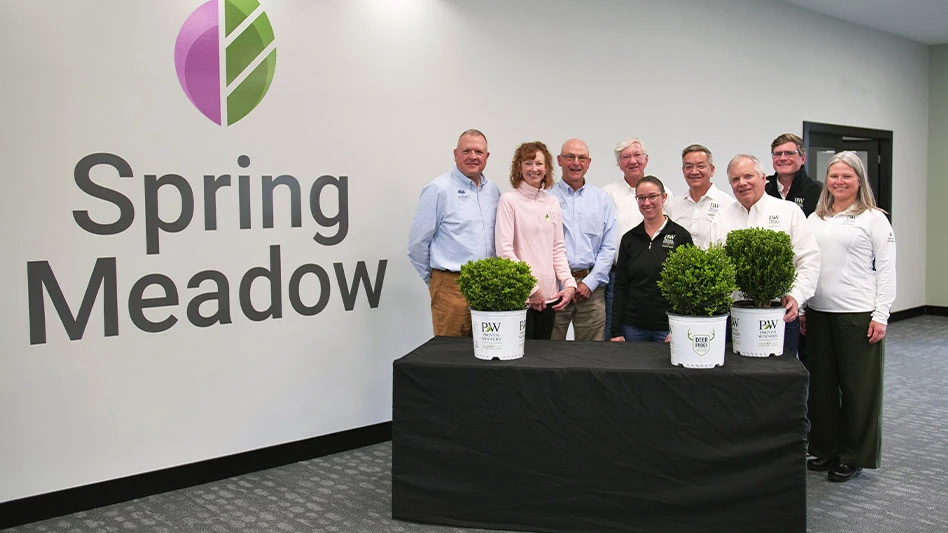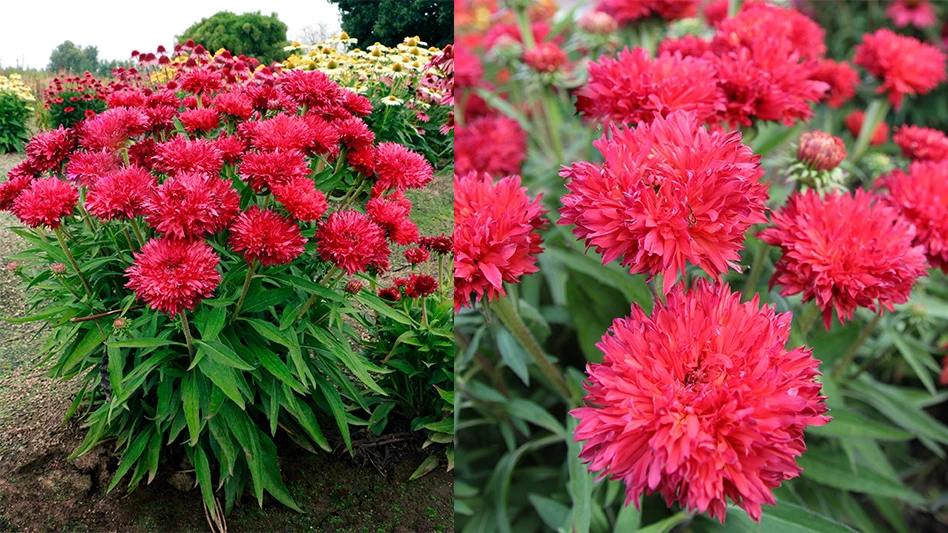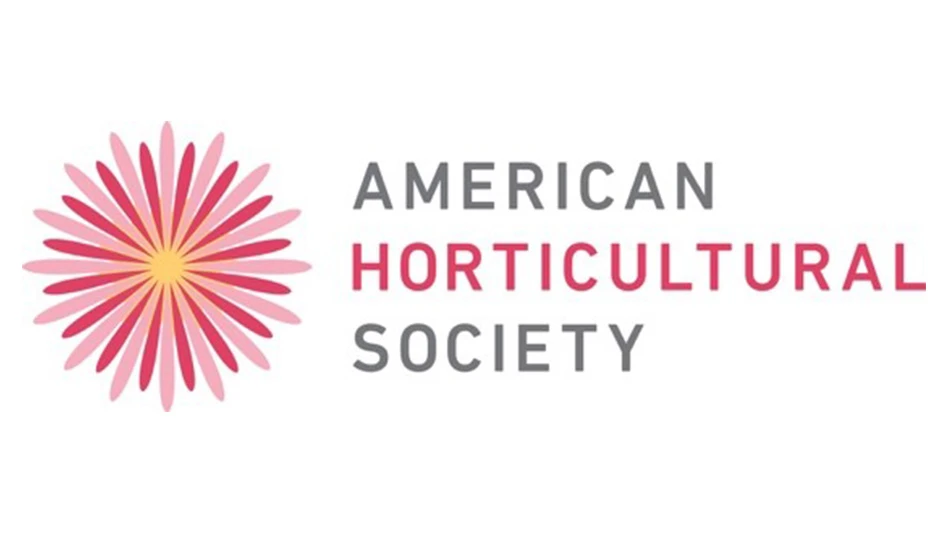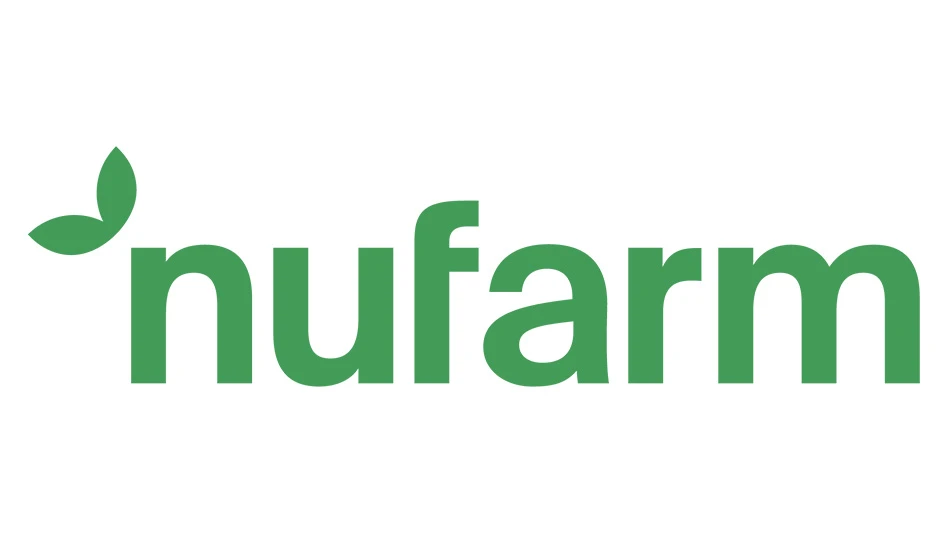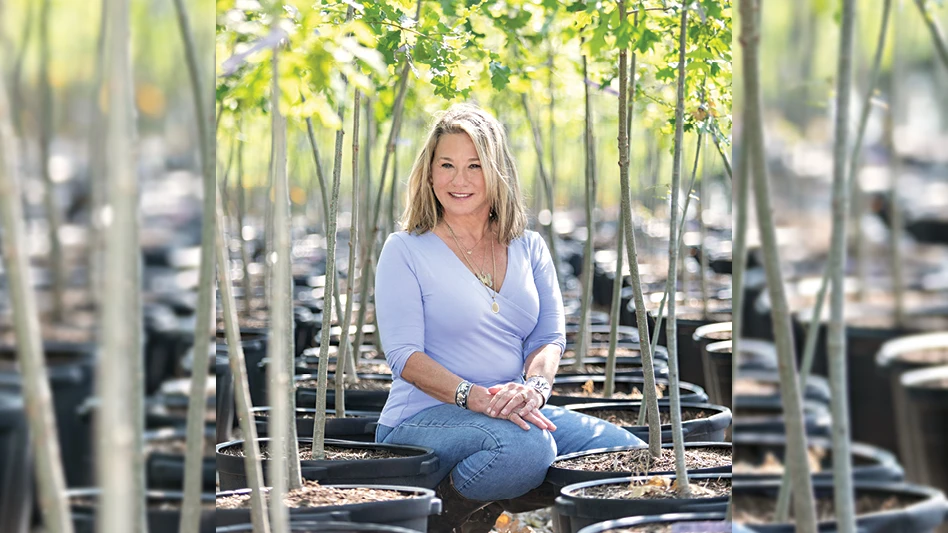 Mark Brownlee is sick of sedum, and he’s not alone. The president and general manager of American Native Nursery is a lifelong student and propagator of native plants, and he wants to see more natives in green roof installations.
Mark Brownlee is sick of sedum, and he’s not alone. The president and general manager of American Native Nursery is a lifelong student and propagator of native plants, and he wants to see more natives in green roof installations.
“Many of the organizations that are considering green roofs are a little taken aback by the current practice of using sedums from Africa or west Asia,” Brownlee said. “Most people who want green roofs want to do it for sustainability reasons as opposed to pure engineering reasons. There is some emotion tied to that, so they want it to be as natural, and therefore, as native as possible. That’s just not the direction the industry has taken so far.”
Most green roofs use the tried-and-true imported German method. But for customers who are looking for something beyond the purely functional benefits of a green roof – customers who might like to use native plants to create a truly sustainable landscape – there is a lack of clear-cut options because it hasn’t been studied like Brownlee is studying it now. Some universities have tried limited trials with natives, Brownlee said, but none have been successful.
“I think that the result of those trials has discouraged other people from trying to find the right native for the right green roof,” he said.
It seemed natural for Brownlee and his team to pick up where previous researchers left off and try to see what they could make out of it. The research is ongoing, and the group is still a few years away from being able to publish repeatable results and methodology.
“We have not published any results, but we will once we believe we have something that anyone can pick up on their own and be successful,” Brownlee said. “That is the hallmark of a good methodology: that the inventors of the methodology don’t have to be the ones who are actually doing it.”
However, he did have three new and interesting discoveries to share.
First, there is a substantial difference in the types of plants a green roof can support based on the depth of the media used on the roof structure. In fact, depth of the media is by far the number one factor that dictates which plants can grow. For institutional green roofs, four inches is the standard depth, because that is what all that is required for sedums to grow. A 4-inch system means less weight on the roof than a thicker system, which is very attractive to buildings where green roofs are being retrofitted. When you get to five and particularly six inches, a large number of plants can be grown, including very common plants.
“What we’re trying to do is focus on the native plants that will grow in that thinner, lighter media type – in the 4- to 5-inch range,” Brownlee said. “Anyone can grow anything they want in six inches of media, particularly if they are irrigating.”
 Second, he has shown that plants that do not already grow in a green roof-like environment do not work. It may seem obvious, but Brownlee said that is largely the mistake that other trials have made. Those trials have taken plants that grow in prairies, the woods and in hot, dry, sunny spots and attempted to use them in green roofs.
Second, he has shown that plants that do not already grow in a green roof-like environment do not work. It may seem obvious, but Brownlee said that is largely the mistake that other trials have made. Those trials have taken plants that grow in prairies, the woods and in hot, dry, sunny spots and attempted to use them in green roofs.
“It’s a fundamentally flawed strategy from the beginning,” he said. “It demonstrates a lack of understanding of how those root systems work and how the plants function.”
However, there is a fairly broad group of native plants that do grow in green roof-like environments. The key is to find green roof-like environments where we live – whether it’s West Coast or East Coast, North or South – and trial those plants, he said. These plants are more likely to succeed in the demanding position of a green roof because they have already shown their ability to grow in those kinds of environments.
There are a few requirements that need to be met before an area can be considered a green roof-like environment. It must have very thin, infertile soil with no water retentive capability or depth, and a no shade, full sun environment. Plants that grow in thin layers of soil along the seashore, essentially in sand, are good candidates because of the soil type and the overall growing conditions. Many of those types of environments are all over the country, except maybe perhaps the Midwest, Brownlee said. Plants that grow in those hostile conditions have grown very well in green roofs so far, according to his research.
The third interesting fact he’s able to disclose at this point in his research relates to the natural genetic variations for plants. Plants that you would not normally expect to grow on a green roof can grow on a green roof if their genetics have been pushed in a certain direction based on where they ended up in the environment.
For instance, Brownlee has observed the common native grass called Little Bluestem in conditions ranging from swamp, to one extreme, to areas where a full size Little Bluestem is growing in about a thimble full of soil.
“The reason for this is as our natural world changes, these plants get stranded,” he said. “Imagine an area that has a million Little Bluestems, and the environment changes. There’s a fire, or the weather becomes extremely dry, all the trees and shrubs die. Out of those million plants all but two might die. It’s those two that remain that already had in their genetic code the ability to survive in this harsh environment, whether it’s hot and dry like a green roof or shady and wet like a marsh.”
Plants that are not normally associated with a green roof environment can grow on green roofs if the plants are grown from seed that are selected from those types of species that can grow in a harsh environment, he said.
Brownlee’s nursery, which has 12 full-time and 25 part-time employees, is a division of Arc(E)wild, an environmental services firm that focuses on full spectrum remediation and restoration projects. American Native Nursery produces the plant material that is needed for these projects. Brownlee said only 5 percent of the available native plants are actually grown at typical native nurseries.
“The full spectrum is difficult to achieve when you are only working with five percent of the palette.” The goal of American Native Nursery is to find, document and collect seeds, then grow a wide range of native plants. While a typical native plant nursery might grow 200 species, American Native Nursery grows 1,500.
For more: americannativenursery.com

Explore the June 2013 Issue
Check out more from this issue and find your next story to read.
Latest from Nursery Management
- The HC Companies, Classic Home & Garden merge as Growscape
- Eason Horticultural Resources will now officially be known as EHR
- BioWorks receives EPA approval for new biological insecticide for thrips, aphids, whiteflies
- Ellen Mackenbach-Lakeman appointed new CEO of Dümmen Orange
- Southern Garden Tour sets 2025 dates for trial garden open houses
- New book explores plants that thrive in Rocky Mountains
- American Floral Endowment establishes Herman Meinders Memorial Tribute
- These companies are utilizing plastic alternatives to reduce horticultural waste
